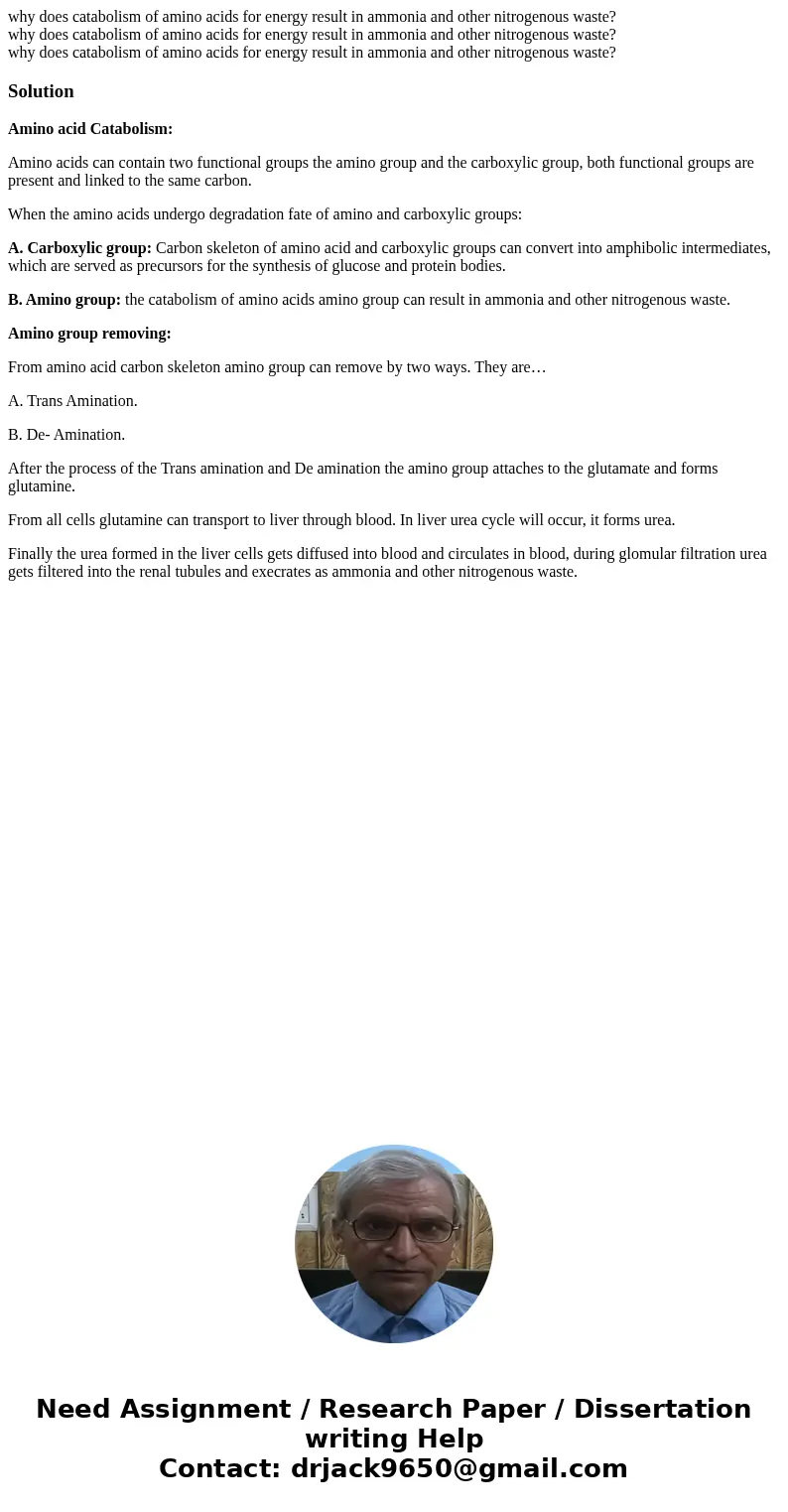why does catabolism of amino acids for energy result in ammo
Solution
Amino acid Catabolism:
Amino acids can contain two functional groups the amino group and the carboxylic group, both functional groups are present and linked to the same carbon.
When the amino acids undergo degradation fate of amino and carboxylic groups:
A. Carboxylic group: Carbon skeleton of amino acid and carboxylic groups can convert into amphibolic intermediates, which are served as precursors for the synthesis of glucose and protein bodies.
B. Amino group: the catabolism of amino acids amino group can result in ammonia and other nitrogenous waste.
Amino group removing:
From amino acid carbon skeleton amino group can remove by two ways. They are…
A. Trans Amination.
B. De- Amination.
After the process of the Trans amination and De amination the amino group attaches to the glutamate and forms glutamine.
From all cells glutamine can transport to liver through blood. In liver urea cycle will occur, it forms urea.
Finally the urea formed in the liver cells gets diffused into blood and circulates in blood, during glomular filtration urea gets filtered into the renal tubules and execrates as ammonia and other nitrogenous waste.

 Homework Sourse
Homework Sourse